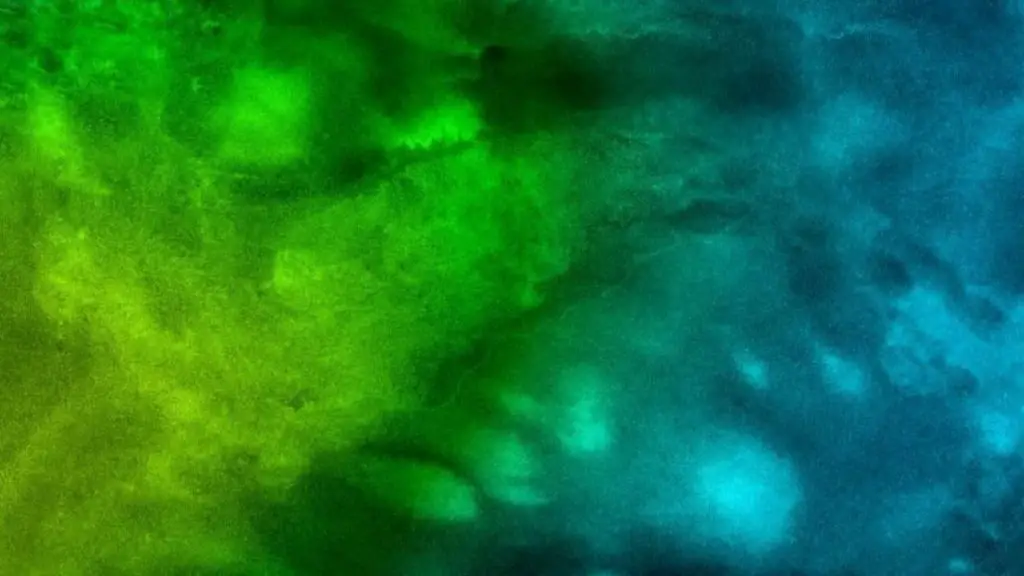What color does blue and green make? This is a question that has been asked for centuries, yet there is no definitive answer. The reason for this is that the color created by blue and green can vary depending on what shade of each color is used.
In this article, we will explore the different types of blue-green colors that can be created, as well as their meanings and how to make them. We will also discuss how to use these colors in design projects!
What Color Does Blue and Green Make?

When you combine blue and green paint, you get a hue that is a tertiary color on the color wheel. It has characteristics of both turquoise and the sea. One of the most popular and desired tertiary colors is blue-green.
The color models used in lights and printing are different from those utilized in painting and other hand-made arts. According to the RGB color wheel, when blue and green light are mixed together, you get cyan. This type of additive coloring is employed to produce colors on your screen only using red, green, and blue pigments.
Tertiary Colors
Tertiary colors are made by combining a primary color and a secondary color. Since blue is a primary color and green is a secondary color in painting, they produce the hue of blue-green.
The tertiary hues on the color wheel are red-orange, yellow-orange, red-purple, blue-purple, and yellow-green. They all have the same appearance as their names imply. Finding the proper hue or tone might be difficult and time-consuming when mixing your own tertiary colors.
Tertiary Colors: Can They Have Other Names?
People seldom call colors blue-green, red-purple, or any other tertiary color name. Most of the time, people will use particular color names for these hues. While turquoise and blue-green are not the same hue, it is more common for individuals to refer to these colors by their well-known names.
Tertiary colors, such as teal, chartreuse, vermilion, magenta, violet, and amber are technically distinct hues. However, you will never see tertiary colors described in these terms when learning about art.
Instead of these names being used to describe crayons, markers, or paint tubes at school, we’re accustomed to hearing them called in this manner.
Tertiary Colors in RGB
The secondary, primary, and tertiary colors all change when in RGB, green replaces yellow as the main color. The names for the tertiary colors on this color wheel are more detailed than those of just a hyphenated version of the primary and secondary colors.
The tertiary colors on the RGB and CMYK versions are azure, violet, rose, orange, chartreuse, and spring green. They do not match exactly the tertiary colors on the painting color wheel because they are somewhat more creative. It’s a little more difficult to memorize their names because of this.
Blue-Green: Types of Colors
Blue-green is a hue that ranges from light blue to dark green. It has variants, tints, and shades based on the colors used in the mixture. Whether you’re using sky blue, mint green, navy, or forest green, any blend of blue and green is technically considered blue-green.
Blue-green hues are many and varied. Turquoise, cerulean, teal, and cyan are some examples of blue-green. However, compared to a pure blue-green hue, most of these are lighter tints of color. If you add a little white or black to the mix, any one of these hues can be produced.
Blue-Green: Creating Shades
Blue-green is a very flexible color, and there are many different versions to choose from. You may need to perform additional mixing to discover the best blue-green. Here are some pointers for producing various types of blue-green.
Making Lighter Blue-Green
You may also add white to the mixture if you want your blue-green to be more light. You might need to use a significant amount of white in order to see a difference. Starting with lighter hues, such as cyan and mint green, will aid in the mixing process.
Making Darker Blue-Green
With pure blue and green, the bluish-green color begins rather dark. However, a dash of black may make it even darker. However, don’t go crazy with black paint since it can quickly overpower the other colors.
Adding More Blue or Green
You may get different colors by not mixing things equally, but rather by adding more blue or green to the mixture.
You can then see whether you want to add white or black after that. When it comes to painting, turquoise has more green than blue, while cyan has more blue than green.
Blue-Green: What Meaning Does it Hold?
Blue-green isn’t as common or consistent as blue and green, but it does have a meaning. It’s a color that’s found in nature, such as water, fish, and damselflies. As a result, it might evoke feelings of adventure or respect for the environment among people.
Blue-green is similar to blue in that it is known to bring calmness and serenity to those who view it. Water, like blue, may be described as calming and soothing, therefore reflecting the same qualities onto people. Consider these meanings before using blue-green in your artwork or design.
Blue and Green: How to Make it?
The CMYK color model demonstrates that hues can be mixed to make blue and green. This is true in all media, and the technique involves subtractive mixing.
Many people believe that you can’t mix colors to obtain the primary hues of light: red, green, and blue (RGB). When it comes to painting, though, mixing magenta and cyan results in blue, as shown on the CMYK color wheel.
Because cyan and magenta paints are more difficult to come by, it’s generally preferable to simply buy blue paint rather than mixing them yourself.
Green is a secondary color in painting, and it may be combined with blue and yellow to make other colors. In printing, on the other hand, it is produced by mixing yellow and cyan.
Blue and Green: Designing
Blue and green are both beautiful colors that are near to each other on the color wheel. As a result, they may be used creatively in designs. You may also use blue-green in addition to blue and green to create a wider variety of hues. Making an artwork solely utilizing cool hues would provide visitors with a sense of calmness.
However, if you’re creating a space in a house and want to use blue and green, less is frequently more. Blue, green, and cyan make wonderful accents for rooms, but only in modest doses. If you have a gray sofa, consider adding a blue-green decorative cushion to freshen things up.
Red and orange, for example, are colors on the other side of the color wheel, and they clash with blue and green since they’re compatible hues. However, if you’re designing a logo, you might want to consider using blue or orange or red, or green to make the letters or icons stand out more.
Conclusion
In conclusion, what color does blue and green make? The answer is blue-green. This color can be made by mixing blue and green together, or it can be found in nature. It has a variety of meanings and can be used in designs. Also, when it comes to painting, blue and green make a great combination.
We also learned how using secondary hues, we can make blue and green. Furthermore, you can have a wide range of shades and tints. It depends on whether you’re adding blue, green, white, or black to it.
In terms of designing with blue and green, less is more. And lastly, when it comes to mixing colors, magenta and cyan make blue.
FAQs
What color do blue and green make when mixing paint?
The color you’ll get when mixing blue and green paint together is called blue-green.
Is there a meaning behind the color blue-green?
Blue-green is known to bring calmness and serenity to those who view it, much like the water it resembles. It may also evoke feelings of adventure or danger. Consider these meanings before using blue-green in your artwork or design.
What other colors can I mix with blue and green?
You can mix yellow and cyan to make green, or purple and yellow to make green. You can also add white, black, or gray to create a variety of shades and tints.
How do I use blue-green in my design?
Blue-green is a beautiful color that goes well with other hues near it on the color wheel. You may use it creatively in designs, as an accent color, or in combination with blue and green to create a wider range of colors. When using cool colors like blue-green, less is often more. too much blue-green can make a space feel cold or uninviting.
Additional Contents



